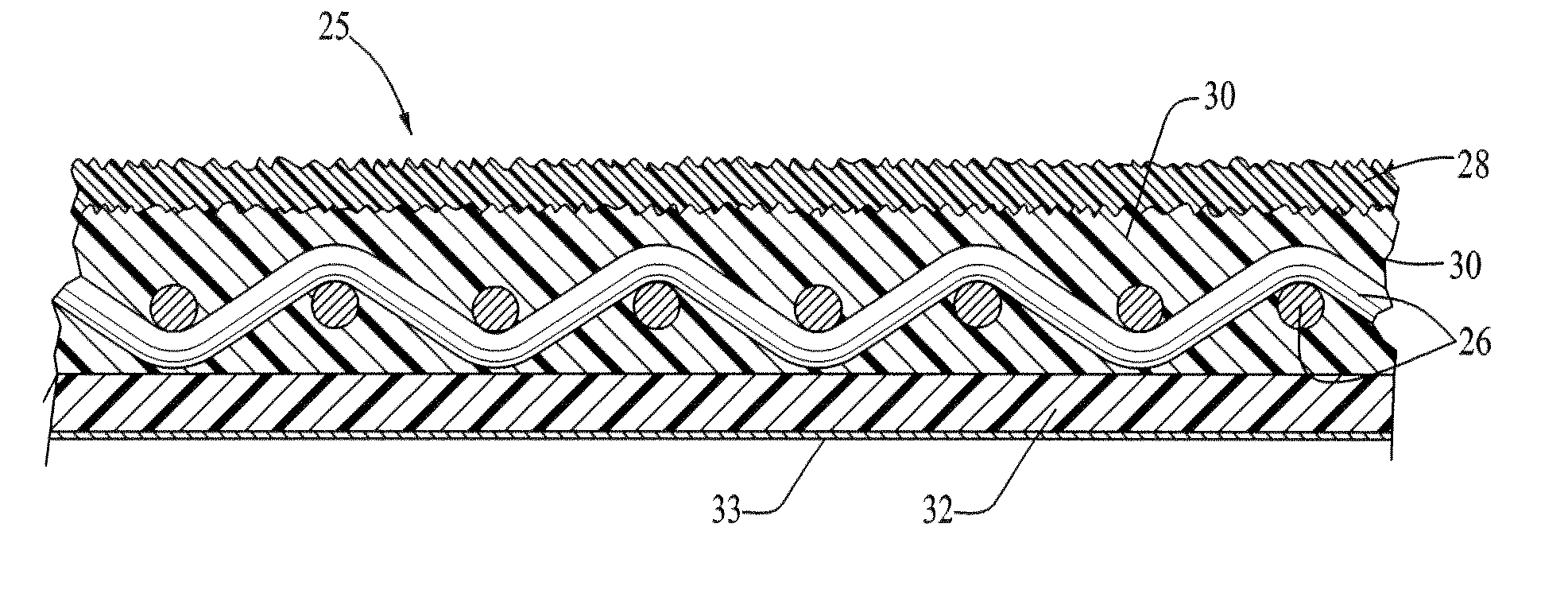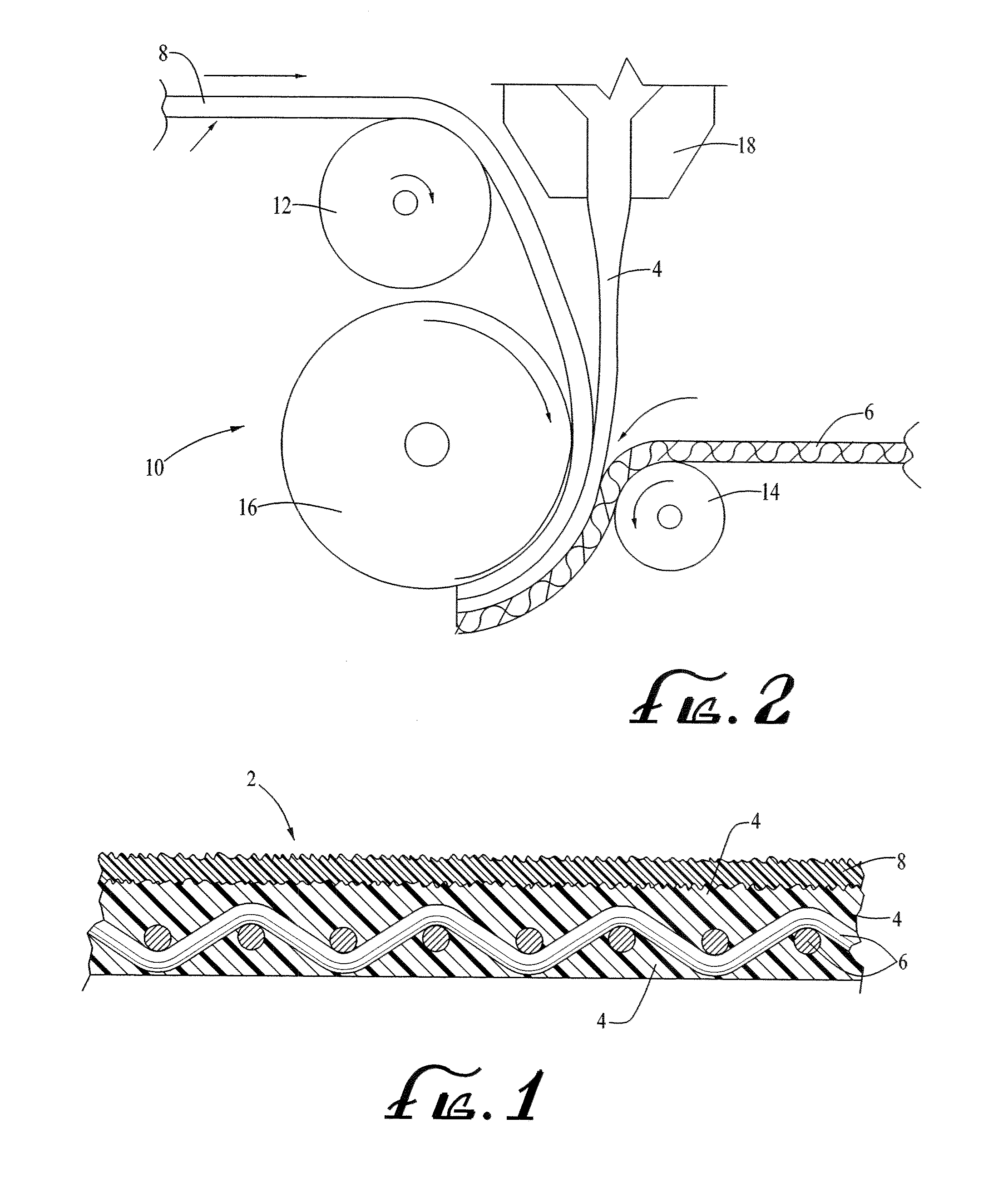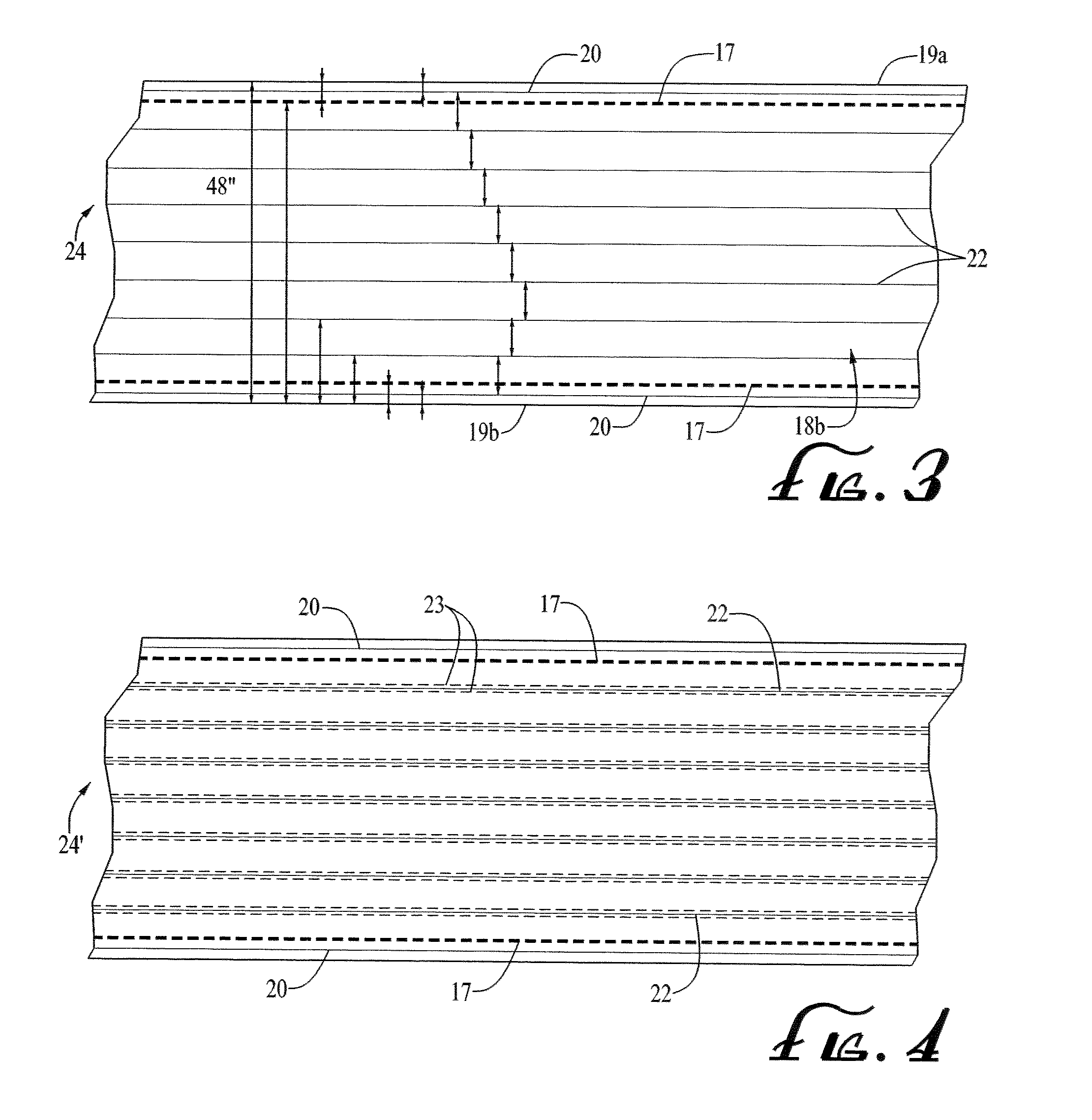Slip resistant roof underlayment
a technology of roof and underlayment, applied in the field of underlayment, can solve the problems of creating a slippery surface for workers installing asphalt, conventional underlayments become slippery, etc., and achieve the effects of improving bonding, abrasion resistance and lay flat quality, and increasing shear strength
- Summary
- Abstract
- Description
- Claims
- Application Information
AI Technical Summary
Benefits of technology
Problems solved by technology
Method used
Image
Examples
first embodiment
[0022]Referring now to FIG. 1, an enlarged, cross-sectional view of a slip resistant roofing underlayment 2, according to the present invention, is illustrated. The roofing underlayment 2 comprises a scrim 6 woven from polypropylene fibers or tapes, a top layer 8 made from a non-woven polypropylene fabric (spun-bond polypropylene), and a polypropylene coating 4 applied between the scrim 6 and the top layer 8 so as to bond the scrim and the top layer together. The thicknesses of the scrim fabric and the top layer 8 are selected depending on the needs of the particular roofing application.
[0023]During lamination, as described below, the polypropylene coating 4 is impregnated into the weaves of the scrim 6, creating a structural bottom layer comprising the scrim impregnated with the polypropylene coating. This impregnation of the scrim 6 with the polypropylene coating 4 also provides an improved bonding with the non-woven fabric of the top layer 8, thereby reducing the chances of delam...
second embodiment
[0035]The conventional method of installing current synthetic polymer roof underlayments requires a plastic cap attached to a number 12 gauge nail shank. The caps provide a larger surface area to hold the current synthetic polymer roof underlayments to the conventional wood sheathing, plywood or OSB deck, as the heads of the larger nails are needed to increase the nail head-to-underlayment contact area, thus reducing the probability of tearing at the nails. Due to the high tensile strength of the underlayment 25 of the present invention, however, standard ⅜ inch nails can be used for installation without the need for plastic caps. This feature speeds installation, as hand-driven ⅜″ nails install faster without the plastic caps. In addition, a standard ⅜″ coil gun can be used, which is the standard nail gun typically used by asphalt shingle installers. Thus, present invention obviates the need for a separate tool to install the underlayment, while providing better sealing at the nail...
PUM
| Property | Measurement | Unit |
|---|---|---|
| temperatures | aaaaa | aaaaa |
| weight | aaaaa | aaaaa |
| melting point | aaaaa | aaaaa |
Abstract
Description
Claims
Application Information
 Login to View More
Login to View More - R&D
- Intellectual Property
- Life Sciences
- Materials
- Tech Scout
- Unparalleled Data Quality
- Higher Quality Content
- 60% Fewer Hallucinations
Browse by: Latest US Patents, China's latest patents, Technical Efficacy Thesaurus, Application Domain, Technology Topic, Popular Technical Reports.
© 2025 PatSnap. All rights reserved.Legal|Privacy policy|Modern Slavery Act Transparency Statement|Sitemap|About US| Contact US: help@patsnap.com



